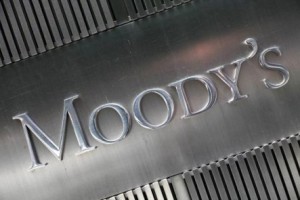Zambia will face challenging economic year in 2016 – Moody’s
 The rating agency Moody’s says 2016 will be a challenging year for Zambia’s macroeconomic stability as the country has set ambitious fiscal targets during an election year.
The rating agency Moody’s says 2016 will be a challenging year for Zambia’s macroeconomic stability as the country has set ambitious fiscal targets during an election year.
It notes that higher public sector wages and development spending will pressure its fiscal position.
A report issued by Moody’s says despite the country’s strong medium-term growth potential, political stability and the fact that responsive monetary policy support its credit profile, the country faces challenges from its lack of credibility of fiscal policy.
The report says the country also faces limited economic diversification as well as vulnerability to lower copper prices and China’s slowdown.
According to Moody’s, the report titled, “Credit Analysis: Zambia”, which is an update to the markets does not constitute a rating action.
“The stable outlook on Zambia’s rating balances near-term risks linked to its rapidly depreciating kwacha currency, low foreign exchange reserves and government spending pressures against key credit metrics that we expect to remain in line with its B2-rated peers,” said Zuzana Brixiova, a Moody’s Vice President — Senior Analyst, and co-author of the report.
The report notes that Zambia’s B2 government bond rating is supported by the country’s high and relatively stable economic growth over the last decade and its good medium-term expansion prospects. It also benefits from a record of political and social stability and monetary policy that is underpinned by a data-driven, forward-looking and improving monetary framework.
It indicates that among the main credit challenges for Zambia are the relative lack of diversification in its economy, doubts about the credibility of its fiscal policy and external vulnerability to factors such as the slowdown in China and lower copper prices.
“Severe electricity shortages have placed an additional burden on the economy. The country’s economic strength is further diminished by high inequality and poverty,” the report says.
Citing the size of Zambia’s economy, expressed in current US dollars, he report says the economy has fallen by more than a fifth over the past year mostly due to currency depreciation and is now below the median for Sub-Saharan Africa.
From the end of December 2014 to the end of October 2015, the kwacha/US$ exchange rate had depreciated by 97% (from 6.39 per dollar to 12.58, albeit recovering some ground recently), leading to a sharp increase in inflation in the fourth quarter and prompting a central bank rate rise, it says.
“Depreciation also contributed to a rapid rise in public debt-to-GDP ratio, which is projected to approach 50% by end-2015,” the report adds.
Acknowledging that Zambia has made progress in diversifying its economy, it notes that copper
still accounted for about 10 per cent of GDP in 2014 and an average of 71 per cent of export revenues over the last five years. Despite recent setbacks, Moody’s still expects the long-term outlook for Zambia’s copper industry to be robust as investment in the sector continues and the global recovery gradually raises demand.
By Emmanuel K. Dogbevi
